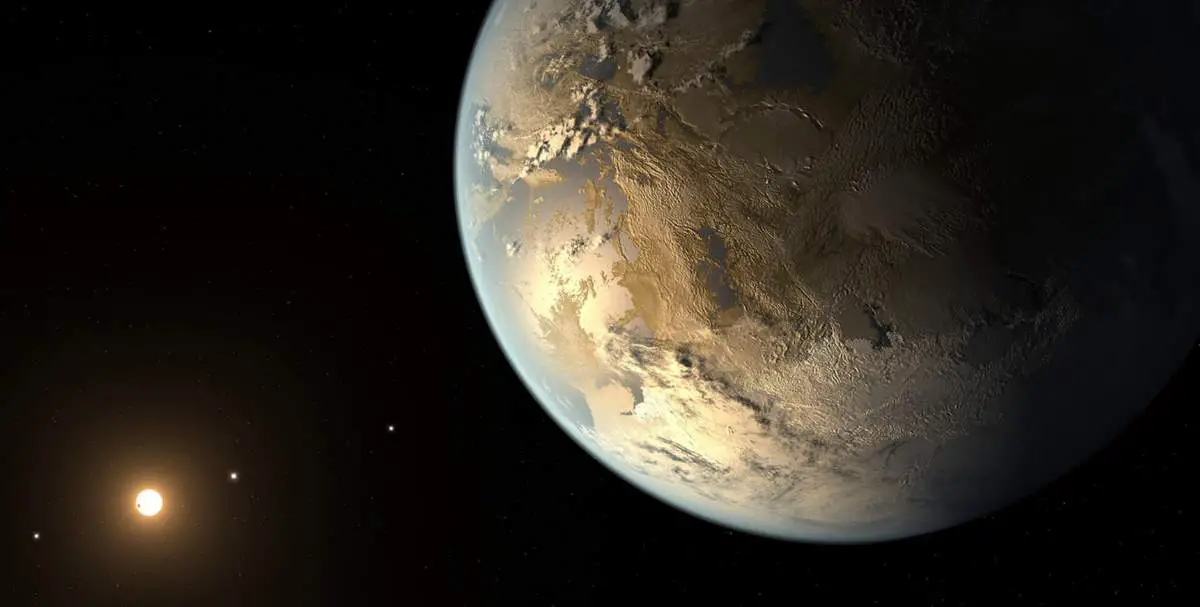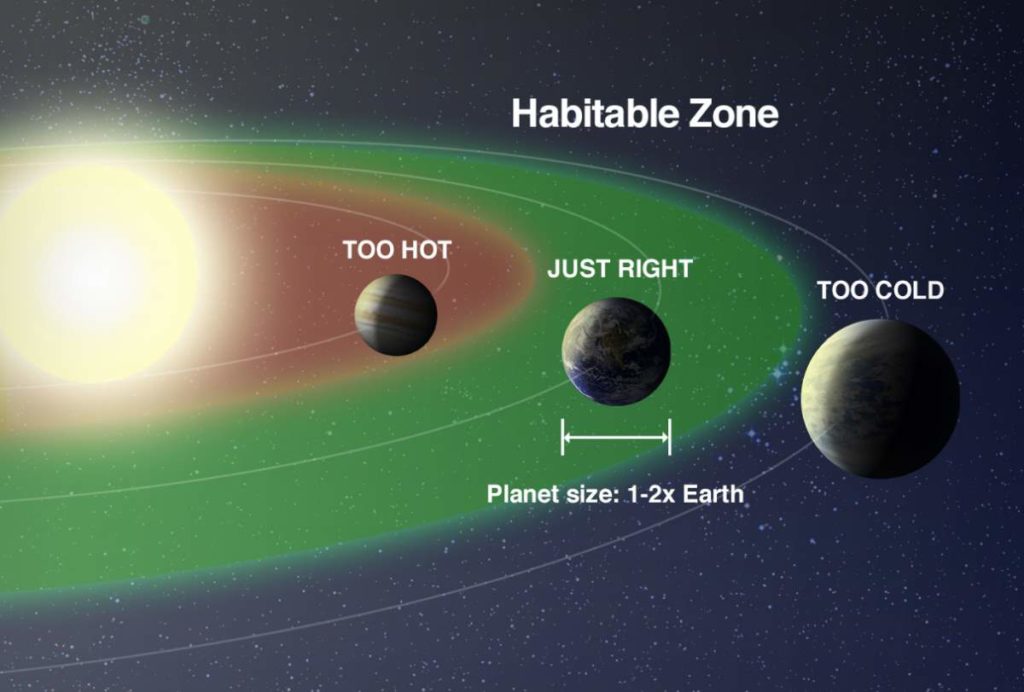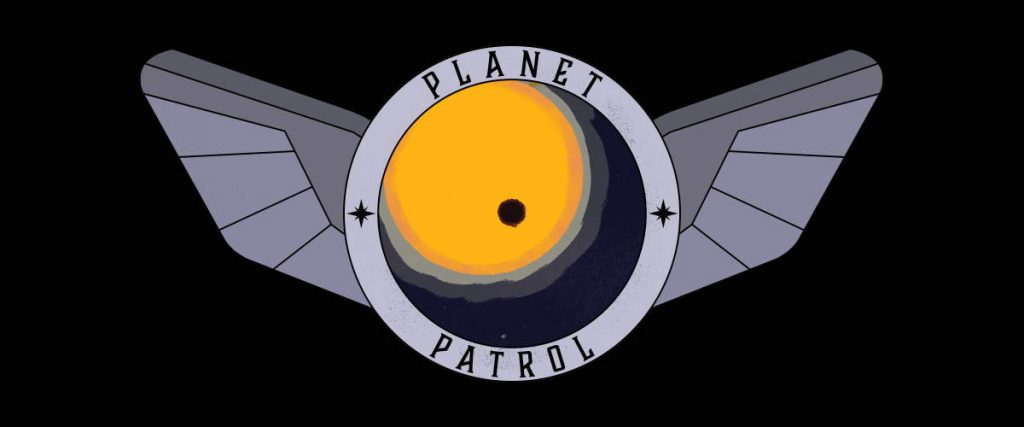Will we ever visit other stars? Maybe, in the distant future, if humans won’t become extinct, our grand grand grand … (insert a hundred or a thousand “grand” here) children can stand on an exoplanet’s surface someday. But, we don’t have to wait. NASA has opened a new web page, an “Exoplanet Travel Bureau”, and we can, at least, see the artists’ imaginations of what an exoplanet surface looks like, based on available data. NASA warns, there are no actual images of the exoplanets, obviously. With interactive 3D images, it is still an exciting experience.
Exoplanet Travel Bureau – Destination List
Unfortunately, currently, NASA Exoplanet Travel Bureau goes only TRAPPIST-1e (or TRAPPIST-1d? there is a mix-up on the website) and Kepler-16b. But you can still download the travel posters of other listed planets.
TRAPPIST-1e “Voted Best”
On February 22, 2017, NASA has announced that seven Earth-sized planets have been observed by NASA’s Spitzer Space Telescope around TRAPPIST-1, a tiny, nearby, an ultra-cool dwarf star located 39 light-years away from Earth in the constellation Aquarius. The good news was: three of these planets (TRAPPIST-1e, f, and g) are firmly in the habitable zone. And the system may even contain water.
You can explore the surface of TRAPPIST-1e with an interactive 3D Artist’s depiction, which is “voted best” according to NASA Exoplanet Travel Bureau.


Related: TRAPPIST-1e has an Iron Core
Kepler-16b “The land of two suns – where your shadow always has company”
Discovered on September 15, 2011, Kepler-16b is a Saturn-mass planet consisting of half gas and half rock and ice, and it orbits a binary star, Kepler-16, with a period of 229 days. After the discovery, Josh Carter of the Harvard-Smithsonian Center for Astrophysics, one of the discovery team has said that “[It] is the first confirmed, unambiguous example of a circumbinary planet – a planet orbiting not one, but two stars”. Thus an imaginary space tourist standing on the surface of the planet would have two shadows.
Kepler-16b orbits near the outer edge of the habitable zone, but it is probably a gas giant with surface temperatures around -100 to -70 °C (-150 to -94 °F).
It is 67 light years away. Explore it, Kepler-16b is spectacular!

Most of what we know about the size of stars comes from pairs of stars that are oriented toward Earth in such a way that they are seen to eclipse each other. These star pairs are called eclipsing binaries. In addition, virtually all that we know about the size of planets around other stars comes from their transits across their stars. The Kepler-16 system combines the best of both worlds with planetary transits across an eclipsing binary system. This makes Kepler-16b one of the best-measured planets outside our solar system.
Kepler-16 orbits a slowly rotating K-dwarf that is, nevertheless, very active with numerous starspots. Its other parent star is a small red dwarf. The planetary orbital plane is aligned within half a degree of the stellar binary orbital plane. All these features combine to make Kepler-16 of major interest to studies of planet formation as well as astrophysics. Source: NASA
Kepler-186f “Where the grass is always redder”
Kepler-186f is the first validated Earth-size planet in the Habitable Zone. It is orbiting the red dwarf Kepler-186, about 550 light-years from the Earth. NASA’s Kepler spacecraft detected it using the transit method, along with four additional planets orbiting much closer to the star (all modestly larger than Earth). The analysis of three years of data was required to find its signal. The results were presented initially at a conference on 19 March 2014 and some details were reported in the media at the time. The public announcement was on 17 April 2014, followed by publication in Science magazine.
Get the poster from NASA Exoplanet Travel Bureau!

Kepler-186f is an exoplanet orbiting the red dwarf Kepler-186, about 500 light-years (171 parsecs, or nearly 5.298×1015 km) from the Earth. NASA’s Kepler spacecraft detected it using the transit method, along with four additional planets orbiting much closer to the star (all modestly larger than Earth). The analysis of three years of data was required to find its signal. The results were presented initially at a conference on March 19, 2014, and some details were reported in the media at the time. The public announcement was on 17 April 2014, followed by publication in Science.
Image: NASA.gov
PSO J318.5-22 “Where the nightlife never ends”
PSO J318.5-22 is a rogue planet, which means it does not orbit any star. That’s why NASA jokingly says “the nightlife never ends”. It is approximately 80 light-years away from Earth. A rogue planet orbits a galactic center directly. The Milky Way alone may have billions of rogue planets.
Get the poster from NASA Exoplanet Travel Bureau!

A rogue planet (also termed an interstellar planet, nomad planet, free-floating planet, orphan planet, wandering planet, starless planet, sunless planet, or Planemo) is a planetary-mass object that orbits the galaxy directly. Such objects have either been ejected from the planetary system in which they formed or have never been gravitationally bound to any star or brown dwarf. The Milky Way alone may have billions of rogue planets.
HD 40307 g “Experience the gravity of a Super Earth”
HD 40307 g is a potentially habitable exoplanet located 42 light-years away. Its host star is HD 40307. It is a super-Earth; an extrasolar planet with a mass higher than Earth’s, but substantially below the masses of the Solar System’s ice giants, Uranus and Neptune, which contain 15 and 17 Earth masses respectively.
Its radius is 15,227 km or 9462 miles, which is 2.39 times bigger than Earth. The mass of HD 40307 g is equivalent to 7.09 times bigger than that of Earth’s mass.
Get the poster from NASA Exoplanet Travel Bureau!
51 Pegasi b “Greetings from your first exoplanet”
Located approximately 50 light-years away from Earth, 51 Pegasi b was the first exoplanet to be discovered orbiting a main-sequence star, the Sun-like 51 Pegasi, and marked a breakthrough in astronomical research. It is the prototype for a class of planets called hot Jupiters.
Its discovery was announced on October 6, 1995, by Michel Mayor and Didier Queloz of the University of Geneva in the journal Nature.
In 2017, traces of water were discovered in the atmosphere of 51 Pegasi b.
Get the poster from NASA Exoplanet Travel Bureau!

51 Pegasi b has not marked a breakthrough in astronomical research for the first time: back in 1995, it was the first exoplanet to be discovered orbiting a main-sequence star. The first confirmed exoplanet discovery came in 1992 when several terrestrial-mass planets orbiting the pulsar PSR B1257+12.
Sources
- “Exoplanet Travel Bureau: Take a Trip Outside Our Solar System” by NASA
- Kepler-16b on Wikipedia
- Kepler-186f on Wikipedia
- PSO J318.5-22 on Wikipedia
- Super-Earth on Wikipedia
- HD 40307 g on Wikipedia
- 51 Pegasi b on W
ikipedia
- Space Shuttle Endeavour’s Touchdown Meets Columbia’s Salute [An amazing photo from the past] - February 29, 2024
- Moon Landings: All-Time List [1966-2024] - February 23, 2024
- From Orbit to Ordinary: 10 Earthly Applications of Space Technology - January 23, 2024




